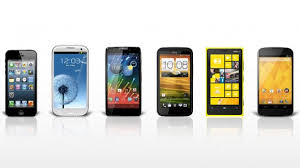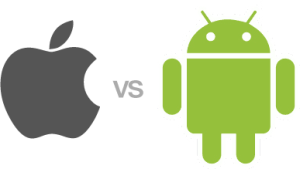In today’s society, the population has been very specific that technology is the way of life. It is the way in which the current generation is taught and it is what most know, and would not know how to live without. The most common object that seems to have taken over the world is the evolution of smartphone and what it has turned into. It is what drives society; these days everyone has a smartphone on his or her person all day.
The first smartphone, developed by IBM and Bellsouth, was Simon, released to the public in 1993. As you can imagine, Simon was very clunky and basically a brick, its dimensions are 8 inches tall, 2.5 inches wide, and 1.5 inches thick. In comparison to the smartphones of the current times, Simon is a massive brick that could probably knock someone out. Simon was seen at the time as a computer phone combination, it included an address book, calendar, fax, calculator, note pad, mail, filer, sketch pad, the time, and to do lists. All together the first smartphone, Simon, was worth $1100.

It was a short life for Simon, the battery power was only about an hour, 50 000 units were sold, and Simon the smartphone had faded away. Although Simon had a short life, it paved the way for the generations of smartphones being manufactured today.
The term Smartphone was introduced by Ericson in 1997 and is now used for a generation of phones. Smartphones are supported by operating systems such as Android and IOS, and act as a mini computer and telephone. They consist of features such as GPS, Internet access, apps, movies, music etc. This differs to a ‘normal phone’, which is basically just a way of calling and texting with little uses on the side, like a camera or game.

These days most companies have converted to produce smartphones. Two very large smartphone companies are Apple with the IPhone, and Android. The difference between the two is their design, but primarily Androids open system, and Apples closed system.

Androids open system allows the user to customize and control the interface, but this open system also makes it easier to have security holes, allowing viruses. Apples closed system means that the way that the phone is set out is staying like that (I don’t mind that, I think Apple is way easier with the way that it is set out), the user cant customize the interface. But the closed system has tightly controlled security for apps and the phone in general.
The progress that has been made from the first smartphone, Simon, to today’s smartphones has evolved to demonstrate howtechnology has revolutionised the way in which people live.
In my opinion, I side with Apple. I would never go back to any other company’s phone or computer. Apple is just simple, easy, and so clean in the way that everything is set out, it’s all so easy and continent to operate. Even though everything is stuck inside the walled garden, I’mhappy to keep it in its closed system, everything is there anyway, no fuss. Apple all the way.

If you have a different opinion on Apple or Android, feel free to try and convert me in the comments.





































